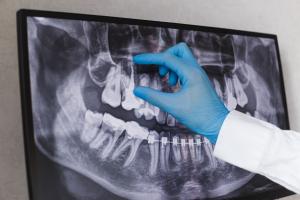Bone Grafting in Implant Dentistry: Supporting Long-Term Success Through Structural Stability
Dr. Chandler Goltz, DMD, owner of Slidell Smiles in Slidell, Louisiana, explains that bone grafting procedures are often necessary to rebuild the jawbone before implant placement.
“Bone grafting is not just an added step,” said Dr. Goltz. “It’s a foundational part of treatment for many implant patients. When the bone has deteriorated or lacks volume, grafting allows for proper placement and long-term support of the implant fixture.”
Tooth loss leads to a natural process called bone resorption. When a tooth is removed, the surrounding bone no longer receives stimulation from the tooth root. Over time, this lack of mechanical stimulation causes the jawbone to shrink in width and height. If left untreated, this resorption can make it difficult or impossible to place a dental implant without augmentation.
Bone grafting compensates for this loss by introducing new bone material into the area. This material can be derived from the patient’s own body (autograft), a human donor (allograft), an animal source (xenograft), or synthetic materials (alloplast). These grafts act as scaffolding for the body to regenerate its own bone, eventually integrating into the existing jawbone to create a stable, load-bearing structure.
In cases of advanced bone loss, sinus lifts or ridge augmentation may be necessary to rebuild vertical and horizontal dimensions of the jaw. These specialized techniques allow for the placement of implants in areas that would otherwise be unsuitable due to anatomical limitations.
Timing of the graft can vary. Some grafts are placed at the time of tooth extraction to preserve the socket and prevent immediate resorption. Others are done as a separate procedure weeks or months before the implant is placed. In certain cases, bone grafting may even be performed at the same time as implant placement, depending on the volume and quality of bone present.
The healing process for bone grafting generally spans several months. During this period, the graft material is gradually replaced by natural bone through a process known as osseointegration. This fusion is essential for the implant to become a stable part of the oral anatomy.
Without adequate bone support, implants can fail due to micromovement, poor load distribution, or lack of integration. In addition to structural concerns, bone grafting also plays a role in aesthetics. In the anterior (front) region of the mouth, where implants must look as natural as possible, maintaining bone volume helps preserve the shape of the gum line and facial contours.
Imaging plays a central role in determining grafting needs. Cone Beam CT scans provide a three-dimensional view of the jawbone, allowing for precise measurements of bone width, height, and density. These scans help guide treatment planning, graft selection, and surgical technique to improve the outcome of the procedure.
Infection control and graft stability are also priorities during the procedure. The graft must remain immobile and free from contamination during the healing process. Barrier membranes are often used to protect the graft and guide tissue regeneration. Proper case selection, surgical technique, and post-operative care all contribute to the success of the graft and the future implant.
Patients with systemic conditions such as diabetes or osteoporosis may require additional evaluation prior to grafting. Smoking, poor oral hygiene, and untreated periodontal disease can also reduce the success rate of bone grafts and should be addressed as part of comprehensive treatment planning.
While bone grafting adds time to the overall implant process, it significantly increases the chance of long-term implant survival. Grafting allows for the use of standard-length implants in patients who would otherwise be limited to shorter or less stable alternatives. It also expands implant eligibility for patients who have been missing teeth for extended periods.
At Slidell Smiles, Dr. Chandler Goltz incorporates bone grafting into implant treatment plans based on detailed diagnostics and clinical evaluation. The goal is to restore both function and stability while preserving the long-term health of the jawbone and surrounding tissues.
Morgan Thomas
Rhino Digital, LLC
+1 504-875-5036
email us here
Visit us on social media:
Facebook
Legal Disclaimer:
EIN Presswire provides this news content "as is" without warranty of any kind. We do not accept any responsibility or liability for the accuracy, content, images, videos, licenses, completeness, legality, or reliability of the information contained in this article. If you have any complaints or copyright issues related to this article, kindly contact the author above.
Southeast Asia and Middle East Copper Wire and Cable Market to Witness Huge Growth by 2032
Jyoti World Strengthens Global Plastics Technology Transfer with Turnkey Indian Manufacturing Hub
The Law Champ Announces New Resources for Personal Injury Victims in Brownsville and Cameron County
Kalendarium
Więcej ważnych informacji
 Jedynka Newserii
Jedynka Newserii

 Jedynka Newserii
Jedynka Newserii

Finanse

Europosłowie za wydłużeniem finansowania krajowych planów odbudowy o 1,5 roku. Apelują o większą przejrzystość wydatków
Instrument na rzecz Odbudowy i Zwiększania Odporności (RRF) – uruchomiony po pandemii COVID-19 – wygasa w sierpniu 2026 roku. Europosłowie w przyjętej niedawno rezolucji postulują, by przedłużyć ten termin o 18 miesięcy dla kluczowych projektów bliskich ukończenia. To szczególnie ważne dla Polski, która przez trzy lata – przez spór poprzedniego rządu z Komisją Europejską – miała zablokowany dostęp do środków z Krajowego Planu Odbudowy (KPO). Jednocześnie rezolucja wzywa do większej przejrzystości wydawanych funduszy.
Polityka
Prof. G. Kołodko: Druga prezydentura Trumpa zmienia Amerykę i świat na gorsze. Nie przyczynia się do rozwiązywania fundamentalnych światowych problemów

Zdaniem byłego wicepremiera i ministra finansów, prof. Grzegorz Kołodki, trumpizm wzmacnia pewne trendy nacjonalizmu, populizmu ekonomicznego i handlowego nie tylko w Ameryce, ale także w innych państwach. W ocenie ekonomisty Trump i trumpizm będą mieli negatywne skutki dla światowych procesów demograficznych, społecznych, kulturowych i ekonomicznych. Prezydentura Trumpa nie skupia się na rozwiązywaniu najważniejszych światowych problemów, takich jak m.in. migracja, zimna wojna, czy też ocieplenie klimatu.
Konsument
Branża opakowań nie traktuje unijnych regulacji jako zagrożenia. Widzi w nich impuls do rozwoju

W UE co roku wytwarza się ponad 2,2 mld t odpadów. Aby ograniczyć ich ilość, promowane jest przechodzenie na bardziej zrównoważony model, czyli gospodarkę o obiegu zamkniętym. W ramach pakietu zmian prawnych ograniczających negatywny wpływ działalności człowieka na środowisko nacisk położony jest w dużej mierze na producentów opakowań. Przedstawiciele branży podkreślają, że nowe regulacje to dla nich nie tylko nowe obowiązki, ale też okazja na zbudowanie przewagi konkurencyjnej.
Partner serwisu
Szkolenia

Akademia Newserii
Akademia Newserii to projekt, w ramach którego najlepsi polscy dziennikarze biznesowi, giełdowi oraz lifestylowi, a także szkoleniowcy z wieloletnim doświadczeniem dzielą się swoją wiedzą nt. pracy z mediami.










.gif)



